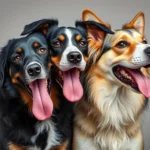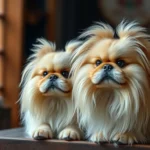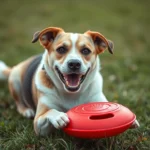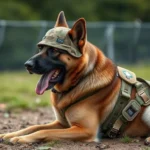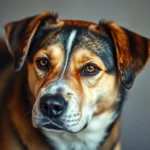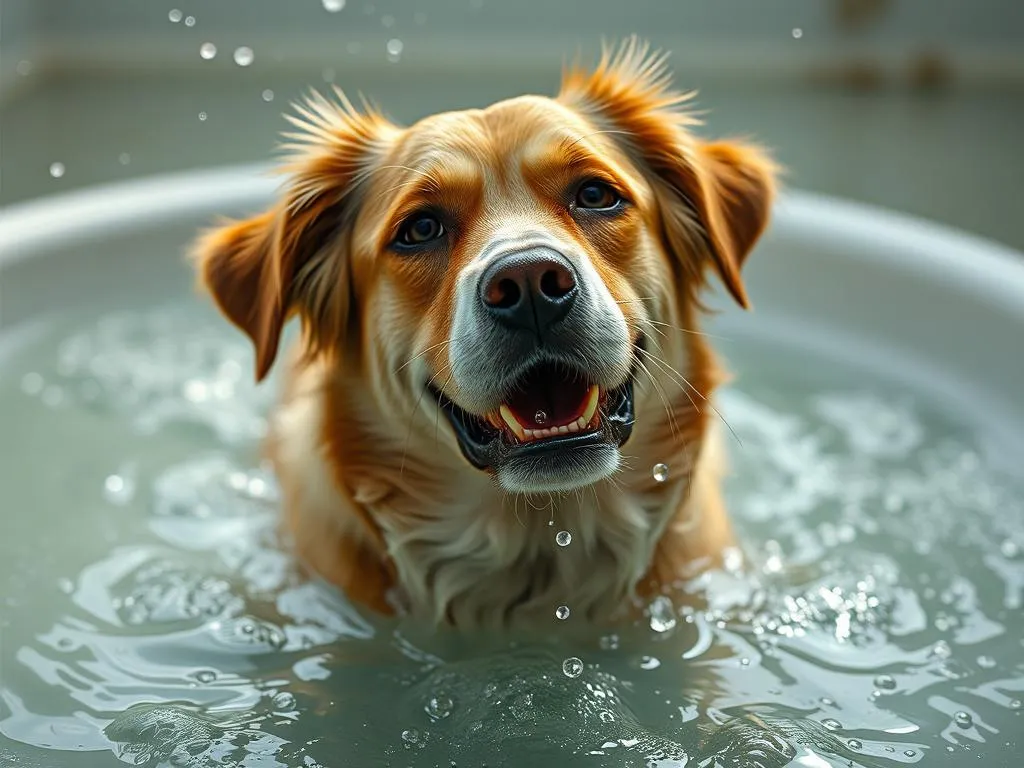
Introduction
Bathing a big dog is not just about keeping them clean; it plays a critical role in their overall health and hygiene. Regular bathing helps to remove dirt, dander, and excess oils, preventing skin issues and maintaining a healthy coat. Moreover, it provides an excellent opportunity for bonding between you and your furry friend. However, many dog owners encounter challenges when it comes to bathing large breeds, from managing their size to ensuring they remain calm throughout the process. This article will provide practical tips, techniques, and safety considerations for how to bathe a big dog effectively and stress-free.
Preparing for the Bath
Gathering Supplies
Before you start the bathing process, it’s essential to gather all the necessary supplies. Here’s a list of what you’ll need:
- Dog shampoo: Choose a high-quality, dog-specific shampoo that suits your dog’s skin type.
- Brushes: A slicker brush or de-shedding tool will help remove loose hair.
- Towels: Large, absorbent towels are necessary for drying your dog.
- Non-slip mat: Place this in the bathing area to prevent slips and provide comfort.
Using dog-specific products is crucial as human shampoos can be too harsh for their skin. Optional items like a spray nozzle for easier rinsing, dog treats for positive reinforcement, and toys can be helpful distractions during the bath.
Choosing the Right Location
Selecting the right location for bathing your big dog is key to a successful experience. Here are some options:
- Bathtub: A spacious bathtub allows for a comfortable environment. However, lifting a big dog in and out can be challenging.
- Shower: This option is practical for larger dogs, especially if you have a handheld showerhead.
- Outdoor space: If the weather permits, bathing outdoors can be fun. Just ensure it’s a controlled environment with easy access to warm water.
Each location has its pros and cons, so consider what works best for you and your dog. Whichever you choose, ensure it’s safe and comfortable.
Safety Considerations
Safety should always be a priority when bathing your big dog. Here are some important considerations:
- Non-slip surfaces: A non-slip mat is essential to prevent your dog from slipping and injuring themselves.
- Water temperature: Ensure the water is lukewarm – not too hot or cold – to keep your dog comfortable.
- Supplies within reach: Gather all your supplies beforehand to avoid leaving your dog unattended during the bath.
The Bathing Process
Preparing Your Dog
Before you start bathing, it’s important to prepare your dog. Here are some tips to help them feel more comfortable:
- Positive reinforcement: Use treats and praise to create a positive association with bath time.
- Calm techniques: Speak softly and gently as you guide your dog into the bathing area. If your dog seems nervous, take a few moments to reassure them with soothing words or a gentle pet.
Wetting Your Dog
When it comes to wetting your dog, it’s essential to do it without overwhelming them:
- Spray nozzle vs. cup: A spray nozzle allows for more control, but a cup can be gentler.
- Avoid getting water in ears and eyes: Tilt your dog’s head slightly downwards and aim the spray towards their body. Use a wet cloth to gently clean their face, avoiding their eyes and ears.
Applying Shampoo
Proper application of shampoo is crucial to ensure cleanliness:
- Amount of shampoo: Generally, a quarter-sized amount should suffice, but it may vary based on your dog’s size and coat length.
- Application technique: Start at the neck and work your way down the body. Avoid the face and ears, using a damp cloth to clean those areas separately.
- Lathering and rinsing: Take your time to lather well, as this helps to remove dirt and oils. Rinse thoroughly to ensure no shampoo residue remains, which can irritate your dog’s skin.
Rinsing
Effective rinsing is vital to ensure a clean coat:
- Techniques: Use a spray nozzle or cup to rinse, making sure to get all areas, especially under the belly and between the legs.
- Ear protection: To prevent water from entering the ears, gently hold your dog’s ears closed while rinsing.
- Skin check: Use this time to inspect your dog’s skin for any unusual bumps or irritations.
Drying Your Dog
Towel Drying
Towel drying is the first step after bathing:
- Best practices: Use large towels to absorb excess water. Start from the head and work your way down, applying gentle pressure.
- Removing excess water: Pat rather than rub to avoid stressing your dog.
Using a Dog Dryer
For a more efficient drying process, consider using a pet-specific dryer:
- Benefits: These dryers are designed to be quieter and more effective on a dog’s coat compared to human hair dryers.
- Safety tips: Always keep the dryer at a safe distance from your dog’s skin and use a low temperature setting to avoid burns.
- Acclimation: Introduce the dryer gradually, allowing your dog to become accustomed to the sound and sensation before fully drying them.
Alternative Drying Methods
Air drying can be an option, but it comes with pros and cons:
- Pros: It requires less effort and is a natural way to dry your dog.
- Cons: It can leave your dog damp for longer, which may not be comfortable, especially in cooler weather.
Combining towel drying and air drying can often yield the best results. Ensure your dog stays warm and comfortable as they dry.
Post-Bath Care
Brushing and Grooming
After a bath, brushing is essential for maintaining a healthy coat:
- Importance of brushing: This helps remove loose fur and prevents matting, especially in long-haired breeds.
- Recommended tools: A slicker brush or de-shedding tool is effective for large breeds.
- Sensitive areas: Be gentle around sensitive spots, such as the belly and underarms, to ensure your dog remains comfortable.
Ear and Nail Care
Post-bath is an excellent time to check your dog’s ears and nails:
- Ear cleaning: Use a damp cloth or dog-specific ear cleaner to wipe the outer ear gently.
- Nail trimming: Regular nail maintenance is crucial. Trim nails as needed, ensuring you have proper tools and knowledge to avoid cutting too close to the quick.
Reinforcing Positive Behavior
After the bath, it’s vital to reinforce positive behavior:
- Rewarding your dog: Offer treats and praise immediately after the bath to create a positive association.
- Bonding activities: Engage in fun activities like playtime or a walk to further strengthen your bond after the bathing experience.
Troubleshooting Common Issues
Dealing with an Uncooperative Dog
It’s not uncommon for dogs to resist bath time. Here are strategies to manage this:
- Managing fear or resistance: Use a calm voice and gentle touches to reassure your dog. If they continue to resist, consider breaking the process into smaller steps.
- Slow introduction: Allow your dog to explore the bathing area before starting. This can help reduce anxiety.
Managing Shed Fur and Odors
For large breeds, shedding and odors can be a challenge:
- Controlling shedding: Regular brushing between baths can significantly reduce loose fur.
- Maintaining freshness: Use dog wipes or a damp cloth for quick clean-ups between baths to keep your dog smelling fresh.
When to Seek Professional Help
Sometimes, a professional groomer may be necessary:
- Signs for professional help: If your dog has matted fur, skin issues, or shows extreme anxiety during baths, consider seeking professional grooming services.
- Health issues: Always discuss any specific health concerns with your veterinarian, especially if you notice unusual symptoms during bathing.
Conclusion
Regular baths are an essential aspect of caring for a big dog, contributing to their hygiene, health, and overall well-being. The bathing process also fosters a special bond between you and your furry friend. Remember to be patient and consistent, making bath time a positive experience for both of you. Your efforts will not only keep your dog clean but also strengthen the trust and companionship you share.
Share your experiences and tips for bathing big dogs in the comments section!

